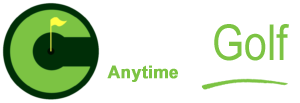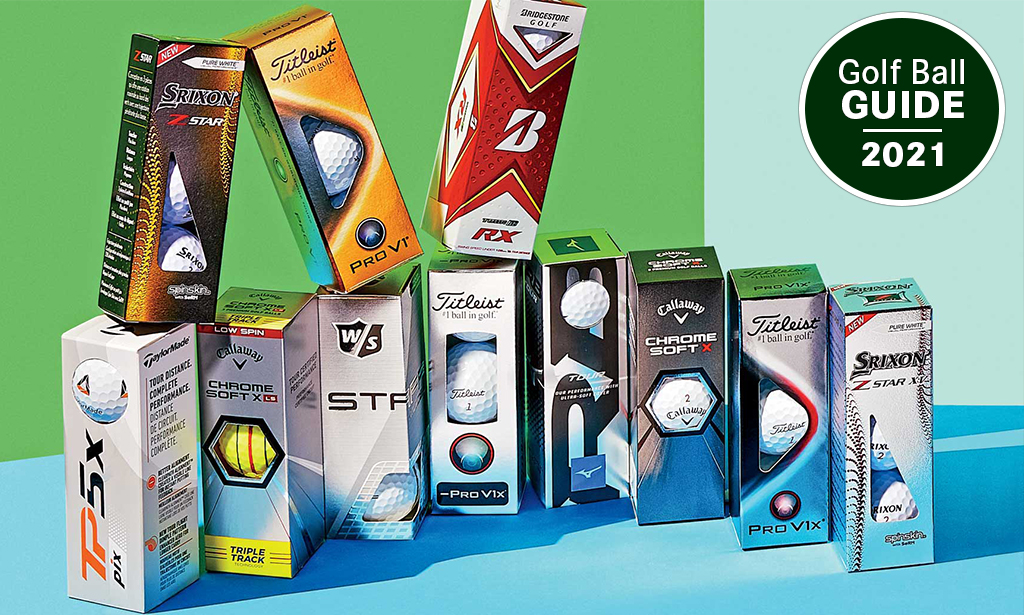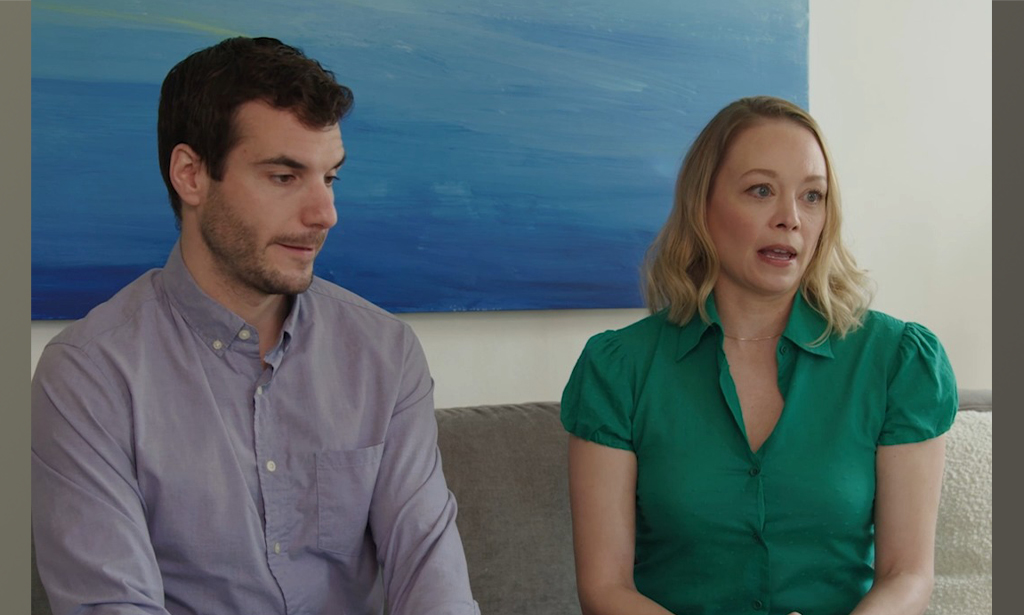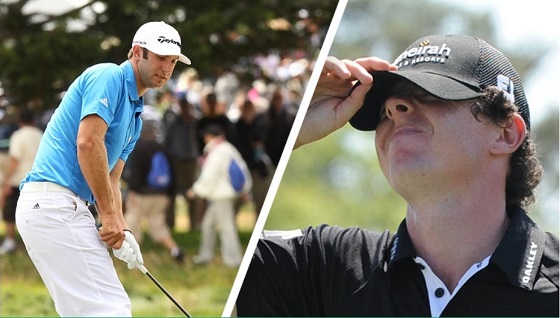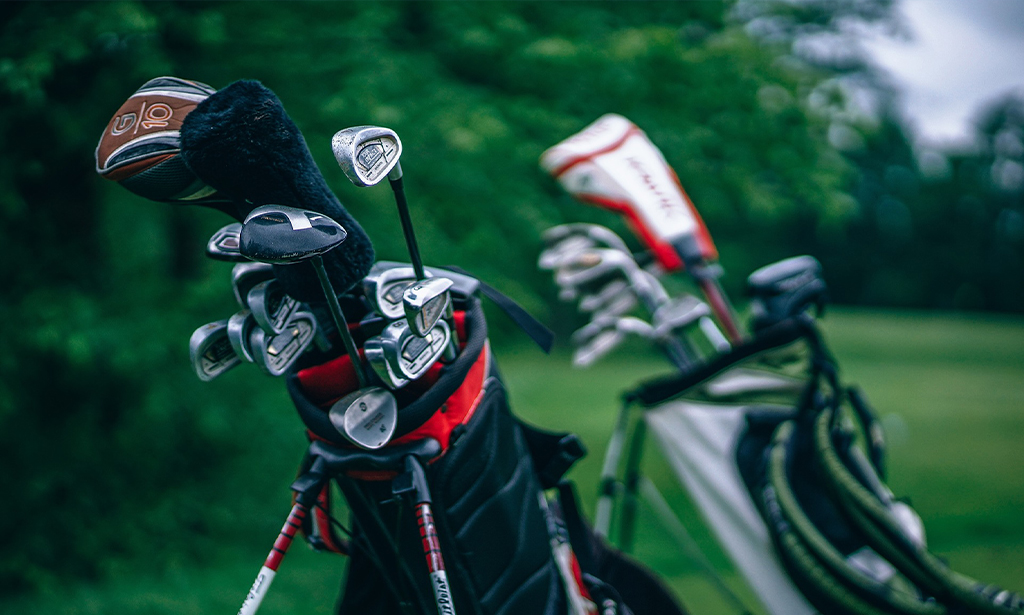Blog
The Elephant in the Room is $40 Million Dollars!

Let’s be honest…There are far more questions than answers right now on the new PGA bonus program the Tour is calling its Player Impact Program, which will be known going forward as the PIP. That’s right, we made it an acronym. That’s how we do!
What is the PIP:
Well, first It’s worth noting that the tour did not publicly announce the program. That’s right, a silent roll out of a HUGE bonus program paying out a whopping $40 million to select 10 players deemed to do the most to boost publicity and engagement for the game and the PGA Tour. The news rather was broken by Golfweek and then confirmed by tour officials. That got us thinking…Why? Why the hush hush, this is a big deal! Maybe because the idea was to reward the one percenters? Maybe because they weren’t sure how it would be received. Either way, it feels a little hush hush and begs the question…what’s the deal with this and why is it important to the tour?
All that being said, we have a few questions:
1. Where is the tour getting this lump sum of stashed loot?
Its not like it’s a few grand laying around, its $40 million! As it stands, there’s no corporate sponsor and there’s not likely to be one, if only because Fred Smith, the CEO of FedEx, which has invested hundreds of millions of dollars in the tour dating to 2007, would probably lose his mind if PGA Tour Commissioner Jay Monahan stood up and proudly proclaimed a new multi-million-dollar corporate partnership (Think Elon Musk) in order to pay 10 players millions of dollars.
2. As it is, I am curious how in the heck FedEx, whose contract with the tour runs for the next 6 years, will react to a new program that rewards players for being – wait for it…popular?
Flawed as the FedEx Cup playoff system is, the hundreds of millions the company has invested has incentivized the top players to keep playing through the end of the summer. In years past, many would simply take a break or “mail it in” after the last major championship is over. To be fair, that was precisely the point when then-commissioner Tim Finchem negotiated FedEx to sign on in the first place. FedEx and the PGA Tour are in bed so deep that the FedEx logo is imbedded in the floor of the lobby inside the tour’s new multi-million-dollar headquarters.
3. Here’s the catch: the tour laid off about 50 employees last summer in the midst of the pandemic.
Now, however, they apparently have $40 million laying around to spend on 10 of its wealthiest players. Essentially saying: “We will just go ahead and chip off what we need of the gold bar and close up the old safe when we’re done”. Now, we are not getting political here, but It’s also worth noting that the tour would not move the Tour Championship out of Atlanta in the wake of the Georgia legislature passing a controversial voting-rights bill because leaving the area would harm local charities. Sooooo, why couldn’t the tour take a chunk of that $40 million, give it to the charities it benefits in the Atlanta region and move the tournament someplace else? Not saying that’s what should have been done, but it is worth an argument that Major League Baseball did exactly that when it announced it was moving the All-Star game out of Atlanta soon after the bill was passed?
4. Therein lies the next question: Why spend $40 million this way anyway?
Aren’t there a myriad of other, more worthwhile things, the money could can be used for other than handing out millions to a small group of men who are already multi-millionaires? The tour constantly cites its charitable giving—which to be completely fair is very generous and quite substantial. This is not an indictment on the tour but rather an open letter asking the question couldn’t all or some of that $40 million be better spent? Maybe give more to charity, Maybe support local junior golf initiatives, Maybe supporting families affected by Covid-19, shoot I can think of a dozen or so other ways to spend such a nest egg. There’s no such thing as enough when it comes to charities, especially nowadays in the wake of the pandemic.
MORE: Tour pros reaction to PGA Tour bonus pool: ‘There’s a little bit of envy’
Here’s an idea: The tour could use some of the money to increase purses at some of its lower-profile tournaments, where the bigger names don’t show up, alluring some bigger names and thus increasing interest amongst the golf community, better TV ratings and overall better golf. Right now, there are four major championships, three playoff events, four WGCs and the Players Championship that stars are expected to play. That’s 12 tournaments in 52 weeks. Really? That essentially means a top player only needs to play three more times to meet his minimum of 15 events per year. While I love incentives, The PIP does nothing to encourage the tour’s stars to play in more tournaments, or tournaments that could use their needle-moving power.
It seems obvious the PIP is simply a reaction to the threat of the proposed Premier Golf League, which was first publicly discussed a year ago. The PGL model calls for 18 events in a season for huge money (reportedly $240 million) each year. But despite all of the financial enticements, a handful of top-ranked players, including Rory McIlroy and Brooks Koepka, have already went on record saying they weren’t interested, stymieing the tour’s launch.
The very idea of the PGL clearly scared the tour, and in my humble opinion, the PIP appears to be a direct response to that concept: If we give top players millions for doing nothing on top of the millions they are already making, they won’t be tempted by the “currently conceptual” PGL. It’s an overreaction to something that doesn’t even exist at the moment.
That said, it’s worth noting who might be among the 10 players in line this year to receive the $40 million in bonuses the tour is going to hand out.
Presumably Tiger Woods is No. 1 on the list (because the tour hasn’t made any ranking public) even though he is recovering from his horrific car accident. Woods is often the most mentioned on social-media platforms that the tour proposes to use to measure, and I am finger quoting here, “impact”. If that’s the case, he still arguably receives more attention than anyone who is actually playing golf right now.

Kevin C. Cox/Getty Images
Here is what Tiger has done to the game…Years ago, when Woods was the No. 1 player in the world by leaps and bounds, Tommy Roy, NBC’s longtime golf executive producer, told me that a survey the network had done asked viewers this question: “Would you rather watch any other player hitting a shot or watch Tiger Woods leaning on his bag waiting for his turn to play?” According to Roy, 45 percent of viewers said they’d rather watch Woods talk club selection with then-caddie Steve Williams.
Woods is 45 now and no one knows if he will ever play in a PGA Tour event again, I for one believe we will see him peg it in 2022. Even with that there are still legions of fans who would rather read one of his tweets than watch Stewart Cink win at Hilton Head—all due respect Cink, whose comeback story is truly inspiring.
Now, guess who probably should be No. 2 on the list, if popularity is the measure? How about Charlie Woods. OK, he’s not eligible (yet) but think about the interest his presence at the PNC Challenge last December created among the media, TV, print, digital, social and otherwise. Of course, I’m kidding that Charlie should be paid for the engagement he helped bring the tour, but I bring him up to make the point that paying competitive athletes (or their children) based on popularity is ludicrous.
MORE: These are funny social-media posts from pros already gunning for the tour’s bonus pool cash
You know who else is clearly in the top 10, perhaps the top five? Rickie Fowler. Yes, I said it. Captain Orange. He is currently ranked 109th in the world and 128th on the FedEx points list. Remember, this isn’t about playing well, it’s about being popular. Fowler hasn’t been seen in a late group on Sunday in a long time, but he’s still on TV selling product non-stop and has a strong social-media presence. Plus, he’s a genuinely nice guy. Everyone loves Rickie, regardless of his struggles inside the ropes.
Bryson DeChambeau, aka Popeye, the sailor man, as well as Brooks Koepka, aka Brooksie would both certainly make the list for their feud and the attention it drew on social media. Bryson also won the U.S. Open last September, he now looks like a young Arnold Schwarznegger and could probably compete with Kyle Berkshire for length.
DJ, Rory, Spieth, Lefty (yes, at almost 51 Phil Mickelson) JT are likely to crack the list. Adam Scott? Perhaps given his appeal among men and women and his playoff finish at the Wyndham. Patrick Reed? Well, lets not get ahead of ourselves…Probably not so much unless it is during a Ryder Cup week and American fans are chanting, “USA,” every time he holes a putt. Then we love you Patrick any other week, not so much.
What about Masters champion Hideki Matsuyama? If this was Japan, he would be No. 1 by a massive margin. But it’s not. Collin Morikawa, the PGA champion and probably the best young player in golf? Maybe, maybe not. He’s just a superb player, an extremely bright guy and personable as they come. But he’s not big on social media. Get cracking Colin!
The larger point isn’t so much who will or will not be on the list. It’s the question again of why spend $40 million to make a bunch of very rich guys richer? To get them to sign more autographs or go on social media more often? Seriously? It’s flailing at an opponent who doesn’t even exist at the moment. It is just about the worst idea since New Coke. With luck, it will go away just about as quickly. Bye Felicia!
Blog
Sustainability in Golf: The Future of Eco-Friendly Greens
Read about the environmental impact of golf courses.
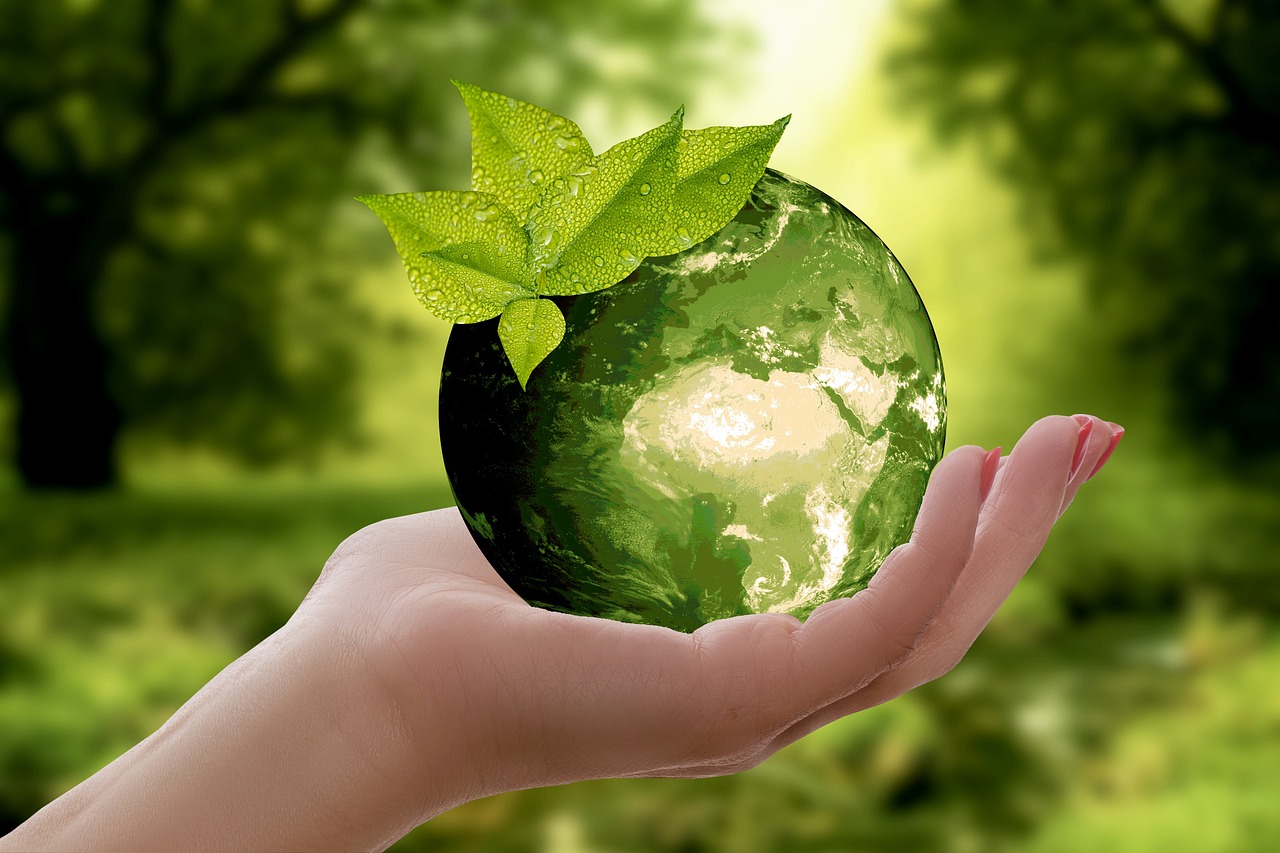
Golf, a sport often associated with pristine, manicured greens and lush landscapes, isn’t historically perceived as eco-friendly. However, with growing concerns about climate change and sustainability, the golf industry is steadily transitioning towards more sustainable practices. This article will explore how golf courses around the world are becoming greener and more eco-friendly while maintaining their appeal to golf enthusiasts.

The Environmental Impact of Golf Courses
Golf courses traditionally use extensive resources, including water, pesticides, and fertilizers, which can have detrimental effects on the environment.
-
-
- Water Usage: Maintaining the verdant landscapes of a golf course requires enormous amounts of water. This is particularly concerning in regions where water scarcity is a significant issue.
- Pesticides and Fertilizers: To keep golf courses lush and free of pests, large amounts of chemicals are often used. These substances can seep into the ground, polluting water sources and harming local wildlife.
- Habitat Disruption: Golf courses often displace natural habitats, upsetting local ecosystems and reducing biodiversity.
-

Green Initiatives in Golf: Sustainability on the Fairways
Recognizing the environmental impact, many golf courses are now implementing sustainable practices to reduce their ecological footprint.

Water Conservation
Water conservation is a significant focus in eco-friendly golf course design. Methods employed include:
-
-
- Recycled Water: Many golf courses are now using recycled water or rainwater for irrigation, significantly reducing the use of freshwater resources.
- Drought-resistant Grass: Some courses are opting for drought-resistant varieties of grass that require less watering.
- Irrigation Technology: Advanced irrigation systems can efficiently distribute water, minimizing waste.
-

Reducing Chemical Usage
Reducing the use of harmful chemicals is another crucial step towards sustainability in golf. This can be achieved through:
-
-
- Organic Fertilizers and Pesticides: Many golf courses are switching to organic alternatives, which are less harmful to the environment.
- Integrated Pest Management: This approach focuses on long-term prevention of pests through biological control and habitat manipulation, reducing the need for chemical pesticides.
-

Preserving Local Habitats
Golf courses are increasingly being designed to coexist harmoniously with local ecosystems. This involves:
-
-
- Preserving Natural Features: Instead of altering the landscape to fit the course, designers are now incorporating existing natural features into the design.
- Creating Wildlife Habitats: Some golf courses are creating habitats for local wildlife, promoting biodiversity.
-
Case Studies: Sustainable Golf Courses Around the World
There are several golf courses worldwide that serve as excellent examples of sustainability in the industry.
- Pebble Beach Golf Links, USA: This renowned golf course uses recycled water for irrigation, reducing its freshwater use by 50%.
- St Andrews Links, Scotland: Known as the “Home of Golf”, St Andrews Links has implemented an extensive environmental management plan, including water conservation, habitat protection, and the use of organic fertilizers.
- Vineyard Golf Club, USA: This golf course in Massachusetts is one of the first to become fully organic, using only organic fertilizers and pesticides.
The Future of Sustainable Golf
The golf industry’s move towards sustainability is not just about eco-friendly practices on the course. It’s also about educating players and visitors about the importance of sustainability, thus promoting a culture of environmental consciousness.
While the transition to greener practices may be challenging, the benefits are immeasurable. Sustainable golf courses not only help protect the environment, but they can also enhance the playing experience, offering golfers the chance to play their favorite sport while surrounded by thriving, natural landscapes.
In conclusion, as awareness of environmental issues continues to grow, the question of “how green can the greens get?” is being answered by golf courses worldwide. Through innovative practices and a commitment to sustainability, the future of golf looks set to be greener than ever. As players, supporters, and enthusiasts of the sport, we can all contribute to this positive change by supporting golf courses that prioritize sustainability and by advocating for green practices within the golfing community.
Blog
The Golfer’s Holiday Hint-Dropping Guide
Your spouse thinks you want socks. You want a new driver. Here’s how to fix that.

Because subtlety is overrated when there’s a new driver on the line
Your spouse thinks you want socks.
Your kids think you want a tie.
Your mother-in-law is convinced you’d love another sweater with a reindeer on it, even though you’ve worn the last three exactly never, and everyone knows it, but somehow this year will be different.
It won’t be.
Here’s the problem. You want golf stuff. They don’t know what golf stuff means. You say “rangefinder” and they hear “robot finder.” You mention “premium golf balls” and they think all golf balls are the same, which is adorable but wrong, and you can’t exactly explain that without sounding like a crazy person who cares too much about dimple patterns.
So you need a strategy.
Not a subtle one either. Forget dropping hints like breadcrumbs. Drop them like anvils. We’re talking about a systematic campaign of suggestion, repetition, and strategic device-leaving that would make Madison Avenue jealous.
The Laptop Strategy (For the Tech-Savvy Golfer)
Leave your laptop open. Always. But not to just anything.
Open to golf retailer websites with items in your cart. Specific items. With the size, color, and model number clearly visible. And here’s the key – leave it open on the kitchen counter where your spouse makes coffee, because everyone looks at screens while waiting for coffee, it’s basically a law of physics at this point.
Do this for three weeks straight. Different items, same cart. They’ll get the message. And if they don’t, you’ve got a backup plan because you can just buy it yourself on December 26th when everything goes on sale.
The Casual Mention Method
This requires finesse.
Not too much though.
The goal is to work golf gifts into every conversation without seeming obsessed, which you are, but they don’t need to know that. Your daughter mentions her science project? “Speaking of projects, I’ve been thinking about upgrading my wedges.” Your son talks about his basketball shoes? “Funny you mention shoes – golf shoes with better traction would really help my game.” The mailman asks how you’re doing? “Great, though I’d be better with a new putter.”
Is this overkill? Maybe. Will it work? Absolutely.
The Magazine Massacre
Buy every golf magazine on the newsstand. Dog-ear the pages. Circle items in red pen. Write notes like “This would be perfect!” and “Honey, look at this one!” and leave them everywhere – the bathroom, the nightstand, the kitchen table, the car, their car, basically anywhere someone might sit for more than thirty seconds.
When they ask why there are seven golf magazines in the living room, just smile and say you’re “doing research.” Research for what? They won’t ask. They’re too busy looking at all those circled items with price tags helpfully highlighted.
The Strategic Screenshot
Text them screenshots. Daily.
“Look at this cool driver!” Send.
“These gloves are on sale!” Send.
“Remember when I mentioned wanting new golf shoes? These are the ones.” Send with three heart emojis because you’re not a monster, you still care about the relationship, you just also care about having the right equipment to shave three strokes off your game.
It’s called balance.
The Gift List That’s Not a Gift List
Create a shared note on your phone called “Gift Ideas” and fill it exclusively with golf items. When they ask what you want for Christmas, just say “Oh, I don’t know, I’m easy to shop for!” and then casually mention you made a little list of ideas, you know, just in case they needed inspiration, no pressure, but it’s organized by price range and includes links.
This works because you’re giving them exactly what they want – a clear shopping list – while maintaining the illusion that you’re being flexible. You’re not. But they don’t need to know that until after the presents are wrapped.
The Buddy System
Recruit your golf buddies. Have them “accidentally” call when your spouse is around. Make sure they loudly discuss the new equipment they just bought and how much it’s improved their game. Your spouse will hear. They’ll connect the dots. And if they don’t, have your buddy call again tomorrow. And the next day. Eventually, either your spouse will buy you golf stuff or they’ll buy you a different phone number, and honestly, both outcomes have their merits.
The Amazon Wish List Blitz
Create an Amazon wish list. Share it with everyone. Your spouse, your kids, your parents, your siblings, your coworkers, that guy you met at the driving range once, everyone.
Put forty items on it. Thirty-eight should be golf-related. The other two? A book and a candle, just so you seem reasonable and well-rounded, which you’re not, but again, they don’t need to know that.
Update it weekly. Add reviews in the comments like “Would really help my slice” or “These are the exact ones my pro recommended.” Make it impossible for them to buy anything else because everything else looks boring compared to golf equipment that promises to transform your game, which it might not, but the promise is what matters here.
The Direct Approach (For the Brave)
Just tell them.
Seriously.
Sit them down. Look them in the eyes. Say “I want golf stuff for Christmas. Specifically, I want this driver, these balls, and this rangefinder. Here are the links. Here are the specs. I’ve made it as easy as possible. Thank you for listening to my TED talk about my golf needs.”
Will they appreciate the honesty? Probably. Will you get what you want? More likely than if you kept hoping they’d telepathically understand that you need a new sand wedge because the grooves on your current one are worn down and it’s affecting your bunker play, which is already bad enough without equipment issues.
The Follow-Up Campaign
Don’t stop after dropping hints. Follow up. “Did you see that text I sent about the driver?” Ask during dinner. “Remember those golf shoes I mentioned?” Ask during breakfast. “Still thinking about that rangefinder.” Say it to no one in particular while watching TV.
Repetition is your friend. Marketing people know this. Politicians know this. Now you know this. Say it enough times and it stops being a hint and starts being a fact – you want golf stuff, they know you want golf stuff, and somewhere in the back of their mind, they’re starting to accept that golf stuff is happening this year.
The Backup Plan
Here’s the truth – they might still get it wrong. They might buy you golf-themed pajamas when you wanted golf balls. They might get you a gift card to a mini-golf place when you wanted a membership to a real course. They might wrap up golf socks, which are fine, but they’re not the GPS watch you’ve been talking about since July.
It’s okay. Say thank you. Mean it. Then on December 26th, hit those post-Christmas sales like a bargain hunter who knows exactly what they want and has been planning this shopping trip since Thanksgiving.
Because you have been.
And that’s fine. Golf equipment is expensive. If waiting one more day means you can get 40% off that driver you’ve been eyeing, that’s called being financially responsible. Your spouse will appreciate it. Eventually. After you explain why you needed three new wedges when you already have wedges.
“The grooves,” you’ll say.
They won’t understand.
But you’ll have new wedges.
The Real Gift
Look, here’s what matters. The holidays aren’t really about getting the perfect golf equipment, even though that would be nice, and you’ve spent considerable mental energy making sure everyone knows exactly what you want.
The holidays are about spending time with people you love. Even if they buy you reindeer sweaters. Even if they think all golf balls are the same. Even if they wrap up golf socks when you desperately need new grips for your irons.
They’re trying. That counts for something.
But also, leave your laptop open to that golf retailer website. Just in case. Because trying is good, but specific product links are better, and you didn’t make it this far in the season without having a solid Plan B.
Happy holidays. May your drives be long, your putts be true, and your gift-givers be observant enough to notice the forty-seven hints you’ve dropped since October.
And if all else fails?
There’s always next year.
Blog
Unveiling the History and Symbolism of Iconic Golf Trophies
Golf is a sport steeped in tradition, prestige, and class. From the lush greens of the course to the meticulously designed clubs, each aspect of the game exudes a sense of history and elegance.

Golf is a sport steeped in tradition, prestige, and class. From the lush greens of the course to the meticulously designed clubs, each aspect of the game exudes a sense of history and elegance. Among these elements, golf trophies – the coveted prizes of the tournament – hold a special place. These iconic awards not only represent the winning golfer’s skill and determination but also carry a rich history and meaningful symbolism. In this article, we’ll delve into the story behind some of the most iconic golf trophies and what they symbolize, offering a unique perspective on this beloved sport.
The Claret Jug: The Open Championship
The Claret Jug, officially known as The Golf Champion Trophy, is awarded to the winner of The Open Championship, one of the four major championships in professional golf. The trophy, first presented in 1873, replaced the original prize of a red leather belt with silver buckle.
Its design is based on the medieval ‘claret jugs’ used to serve wine. The symbolism here lies in the association of the jug with a time-honored tradition, reflecting the essence of the tournament itself. The names of all the previous winners are inscribed on the jug, creating a tangible link to the history of the sport.
The Green Jacket: The Masters Tournament
At The Masters Tournament, one of the most prestigious events in golf, the winner is honored with a distinctive green jacket. The tradition began in 1937 when members of the Augusta National Golf Club wore green jackets to distinguish themselves from the crowd.
The symbolism of the Green Jacket is twofold. Firstly, it represents membership of an exclusive club, as only winners of The Masters or members of the Augusta National Golf Club are entitled to wear it. Secondly, the green color reflects the lush, pristine condition of the golf course, a crucial aspect of the sport.
The Wanamaker Trophy: PGA Championship
The Wanamaker Trophy, awarded to the winner of the PGA Championship, is named after Rodman Wanamaker, who played a significant role in establishing the Professional Golfers’ Association of America. It’s one of the largest trophies in professional golf, standing nearly 2.5 feet tall and weighing 27 pounds.
The size and weight of the Wanamaker Trophy symbolize the magnitude and prestige of the tournament it represents. Moreover, engraved on its silver surface are the names of past champions, honoring the legacy of the game.
The U.S. Open Trophy
The U.S. Open Trophy, awarded to the winner of the U.S. Open, dates back to 1895. The trophy was destroyed in a fire in 1946 and had to be recreated from photographs of the original.
The trophy is a sterling silver cup, adorned with elaborate ornamentation. The names of previous winners are engraved on the base, acknowledging the tournament’s rich history. The trophy represents the pinnacle of achievement in American golf, symbolizing the grit and determination required to prevail in one of the sport’s most challenging competitions.
Golf trophies are more than just symbols of individual triumph; they are embodiments of the rich history, tradition, and enduring spirit of the game. From the Claret Jug’s reflection of time-honored tradition to the Green Jacket’s symbolization of exclusivity and pristine golfing conditions, each trophy carries a unique story and meaning. These iconic awards, while coveted for their prestige, also serve as a timeless reminder of the sport’s enduring allure and the unforgettable moments that define golf history.
-

 Product Review6 years ago
Product Review6 years agoThe Perfect Practice Putting Mat Review by Jason Tenzer
-

 Blog4 years ago
Blog4 years agoLoophole Rule Offers PGA Tour Pros a Mulligan
-

 Blog4 years ago
Blog4 years ago2021 Buyer’s Guide: The Top 10 Value Golf Balls For Distance & Feel
-

 Blog5 years ago
Blog5 years agoGolf Marriage Counselor
-

 Blog6 years ago
Blog6 years ago9 Biggest Chokes Of The Past Decade
-

 Product Review6 years ago
Product Review6 years agoTHE ADJUSTABLE IRONS: WALKING STICKS GOLF CLUBS
-

 Blog4 years ago
Blog4 years agoWhat Your Golf Clubs Say About You
-

 Equipment6 years ago
Equipment6 years agoOHK Sports Interview by Jason Tenzer
